-
 Bitcoin
Bitcoin $106,754.6083
1.33% -
 Ethereum
Ethereum $2,625.8249
3.80% -
 Tether USDt
Tether USDt $1.0001
-0.03% -
 XRP
XRP $2.1891
1.67% -
 BNB
BNB $654.5220
0.66% -
 Solana
Solana $156.9428
7.28% -
 USDC
USDC $0.9998
0.00% -
 Dogecoin
Dogecoin $0.1780
1.14% -
 TRON
TRON $0.2706
-0.16% -
 Cardano
Cardano $0.6470
2.77% -
 Hyperliquid
Hyperliquid $44.6467
10.24% -
 Sui
Sui $3.1128
3.86% -
 Bitcoin Cash
Bitcoin Cash $455.7646
3.00% -
 Chainlink
Chainlink $13.6858
4.08% -
 UNUS SED LEO
UNUS SED LEO $9.2682
0.21% -
 Avalanche
Avalanche $19.7433
3.79% -
 Stellar
Stellar $0.2616
1.64% -
 Toncoin
Toncoin $3.0222
2.19% -
 Shiba Inu
Shiba Inu $0.0...01220
1.49% -
 Hedera
Hedera $0.1580
2.75% -
 Litecoin
Litecoin $87.4964
2.29% -
 Polkadot
Polkadot $3.8958
3.05% -
 Ethena USDe
Ethena USDe $1.0000
-0.04% -
 Monero
Monero $317.2263
0.26% -
 Bitget Token
Bitget Token $4.5985
1.68% -
 Dai
Dai $0.9999
0.00% -
 Pepe
Pepe $0.0...01140
2.44% -
 Uniswap
Uniswap $7.6065
5.29% -
 Pi
Pi $0.6042
-2.00% -
 Aave
Aave $289.6343
6.02%
Is it the last opportunity to leave after the rebound without volume after breaking the neckline?
A neckline break in crypto trading signals potential trend shifts, but without strong volume, it may lead to false signals and price pullbacks.
Jun 18, 2025 at 12:49 pm
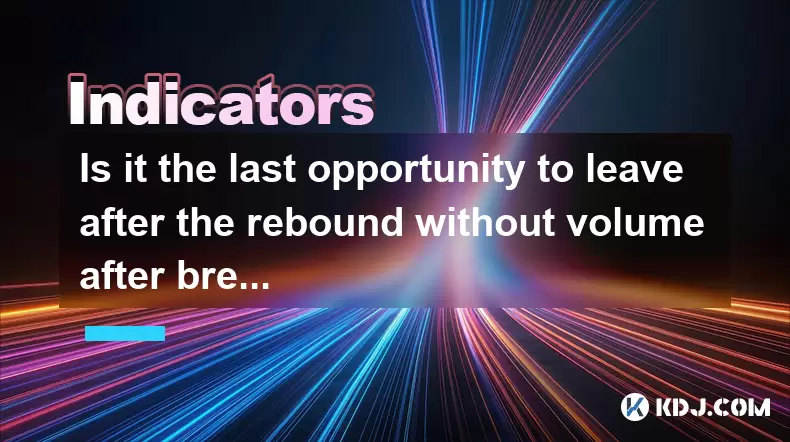
Understanding the Neckline Break in Technical Analysis
In cryptocurrency trading, technical analysis plays a pivotal role in identifying potential reversal or continuation patterns. One such critical level is the neckline, which typically forms during classic chart patterns like the head and shoulders or inverse head and shoulders. When the price breaks below (or above, in the case of inverse patterns) this neckline, it often signals a shift in market sentiment.
A break below the neckline in a bearish head and shoulders pattern suggests that sellers have gained control. However, not all breaks are created equal. Traders must distinguish between a true breakout and a false breakout. A valid breakdown should ideally be accompanied by an increase in trading volume, confirming the strength behind the move. If the break occurs without significant volume, it raises concerns about its legitimacy.
Key Takeaway: A neckline break without volume may indicate weak conviction among traders and could lead to a false signal.
What Happens After a Volume-Less Neckline Break?
After a neckline break without accompanying volume, the price may experience a rebound. This rebound can confuse traders, especially those who entered short positions after the initial breakdown. In many cases, the price retraces back to the broken support/resistance level before resuming the trend. This phenomenon is known as a pullback or retest.
During this phase, traders might question whether they should exit their positions or wait for further confirmation. The lack of volume on the initial break casts doubt on the sustainability of the new trend. Therefore, if the price rebounds toward the neckline area, it becomes crucial to monitor how the market reacts at that level.
- Watch for rejection candles near the former neckline.
- Look for signs of renewed selling pressure.
- Monitor volume during the retest—if volume picks up on the downside, the original breakdown may still be valid.
Important Tip: Do not assume that a pullback automatically invalidates the trend. Wait for confluence of signals before making decisions.
Is It Safe to Exit Positions After a Rebound Without Volume?
The decision to exit depends heavily on your risk tolerance, position size, and overall strategy. If you entered a trade based on the neckline break and the price has since bounced back, it's essential to reassess the situation rather than panic.
Traders often use stop-loss orders placed beyond the recent swing high or low to manage risk. If the price action starts showing indecision—like doji candles or tight ranges—it may be prudent to lock in partial profits or close the position entirely.
However, exiting prematurely could cause you to miss out if the trend resumes. Instead of closing the entire position, consider scaling out:
- Close half the position when the price reaches a key level.
- Move the stop-loss on the remaining portion to breakeven.
- Let the rest ride if momentum remains intact.
Caution: Exiting too early may prevent you from capturing full potential gains if the trend regains strength.
How to Confirm Whether the Trend Is Still Valid
After a rebound without volume, confirming the validity of the trend requires careful observation of several technical indicators and price behaviors:
- Price Action Behavior: Does the price show strong bearish candles after the retest? Or does it struggle to make new lows?
- Volume Profile: Is there any sign of increasing volume on down days post-retest? A sudden spike in volume could indicate institutional participation.
- Moving Averages: Check if the price remains below key moving averages like the 50-period or 200-period EMA.
- Momentum Indicators: Tools like RSI or MACD can help identify divergences or confirmations. For example, a bearish divergence on RSI might suggest weakening momentum.
If these elements align with the initial directional bias, the trend may still be intact despite the temporary bounce.
Critical Signal: A failure to make new lows after a retest may indicate that the downtrend is losing steam.
Strategic Options for Traders Facing This Scenario
When facing a situation where the price has rebounded after breaking the neckline without volume, traders have multiple strategic options:
- Hold and Observe: If the structure of the pattern remains intact and there’s no clear invalidation, holding through the pullback can sometimes yield better results.
- Scale Out Gradually: As mentioned earlier, reducing exposure while maintaining some exposure allows flexibility.
- Re-enter on Confirmation: If the price shows renewed weakness after the retest, consider re-entering at better levels.
- Switch to Neutral: If the price action becomes increasingly indecisive, stepping aside until clarity returns is also a valid approach.
Each of these strategies carries its own set of risks and rewards. The key is to remain objective and avoid emotional decision-making.
Strategic Insight: Emotional trading often leads to poor outcomes—stick to your plan or adjust only with clear evidence.
Frequently Asked Questions
Q: How can I differentiate between a real neckline break and a fake one?
A: A real neckline break usually comes with increased volume, a clean close below/above the level, and follow-through in the next few candles. Fake breaks often occur on low volume, fail to hold the new level, and quickly reverse.
Q: Should I always wait for a retest before entering a trade after a neckline break?
A: Waiting for a retest can provide better entry points and reduce the risk of falling for a false breakout. However, in strong trending markets, the price may not return, so it's important to assess the context.
Q: What time frame should I focus on when analyzing neckline breaks?
A: While neckline patterns can appear on all time frames, higher time frames (like the 4-hour or daily charts) tend to offer more reliable signals due to reduced noise and greater participation.
Q: Can I use other indicators alongside neckline analysis?
A: Yes, combining neckline analysis with tools like Fibonacci retracements, trendlines, and oscillators can improve the accuracy of your trades. Always look for confluence across multiple indicators.
Disclaimer:info@kdj.com
The information provided is not trading advice. kdj.com does not assume any responsibility for any investments made based on the information provided in this article. Cryptocurrencies are highly volatile and it is highly recommended that you invest with caution after thorough research!
If you believe that the content used on this website infringes your copyright, please contact us immediately (info@kdj.com) and we will delete it promptly.
- Filecoin, Secure Storage, and Avalanche Enterprises: A New Era of Blockchain Collaboration
- 2025-06-20 14:45:13
- SEI Price Surge: Decoding the Reasons Behind the Rise
- 2025-06-20 14:25:12
- Cryptos for the Long Haul: Early Investors' Edge in 2025
- 2025-06-20 14:25:12
- Bitcoin Price in June 2025: Riding the $100K Wave?
- 2025-06-20 14:45:13
- Bitcoin Cash (BCH) Momentum: Riding the Wave of Geopolitical Uncertainty
- 2025-06-20 14:50:12
- Crypto, Bitcoin, and Uptime: Decoding the Latest Trends and Insights
- 2025-06-20 14:50:12
Related knowledge
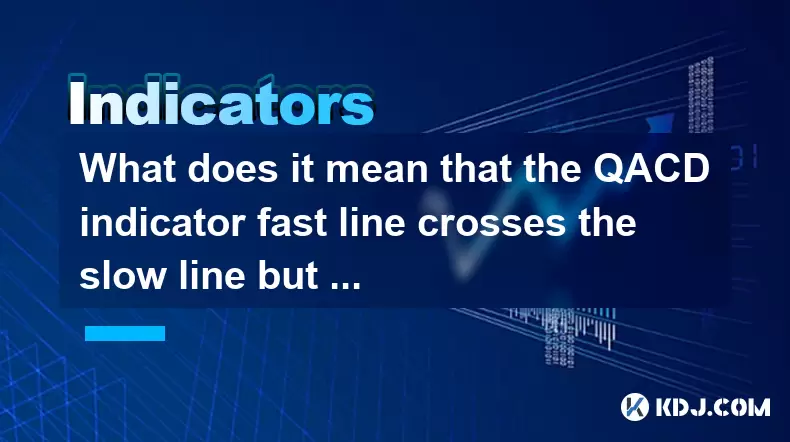
What does it mean that the QACD indicator fast line crosses the slow line but does not increase in volume?
Jun 20,2025 at 12:22pm
Understanding the QACD Indicator and Its ComponentsThe QACD (Quantitative Accumulation Convergence Divergence) indicator is a technical analysis tool used by traders to identify potential trend reversals, momentum shifts, and entry or exit points in cryptocurrency markets. It consists of two primary lines: the fast line, which reacts more quickly to pri...
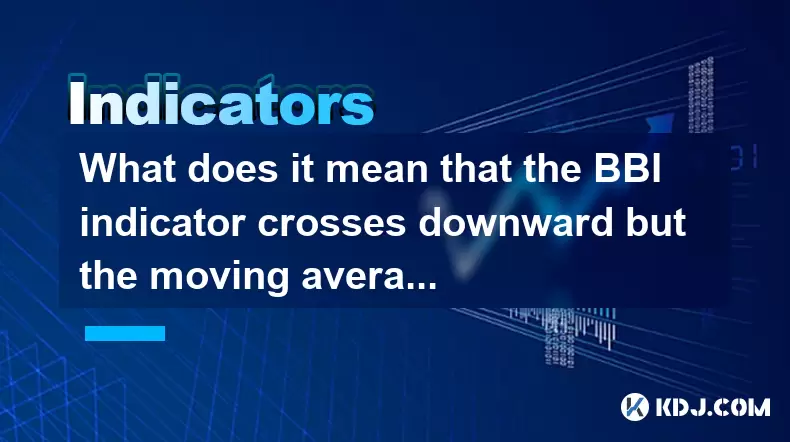
What does it mean that the BBI indicator crosses downward but the moving average does not cross?
Jun 20,2025 at 03:07pm
Understanding the Role of Blockchain in Cryptocurrency TransactionsBlockchain technology is the foundational infrastructure behind most cryptocurrencies. It serves as a decentralized, distributed ledger that records all transactions across a network of computers. This ensures transparency and eliminates the need for a central authority like a bank. Each...
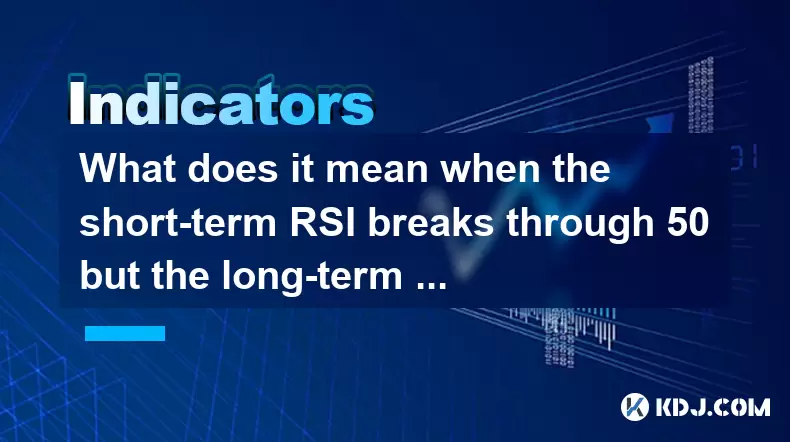
What does it mean when the short-term RSI breaks through 50 but the long-term RSI does not move in the RSI indicator?
Jun 20,2025 at 10:42am
Understanding the RSI Indicator and Its Dual-Term ApplicationThe Relative Strength Index (RSI) is a widely used momentum oscillator in technical analysis, primarily for identifying overbought or oversold conditions in an asset’s price movement. It typically operates on a scale from 0 to 100, with levels above 70 considered overbought and below 30 consid...
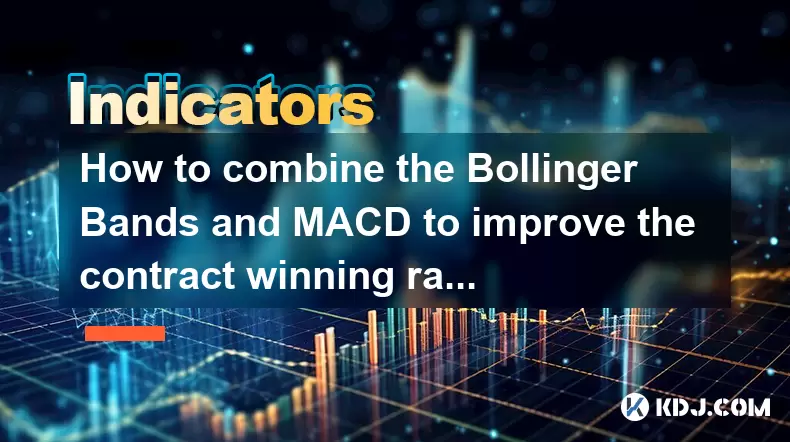
How to combine the Bollinger Bands and MACD to improve the contract winning rate?
Jun 19,2025 at 06:35pm
Understanding Bollinger Bands and MACD IndicatorsTo effectively combine Bollinger Bands and the MACD (Moving Average Convergence Divergence), it's essential to first understand what each indicator represents. Bollinger Bands consist of a middle moving average line and two outer bands that adjust based on market volatility. When prices move toward the up...
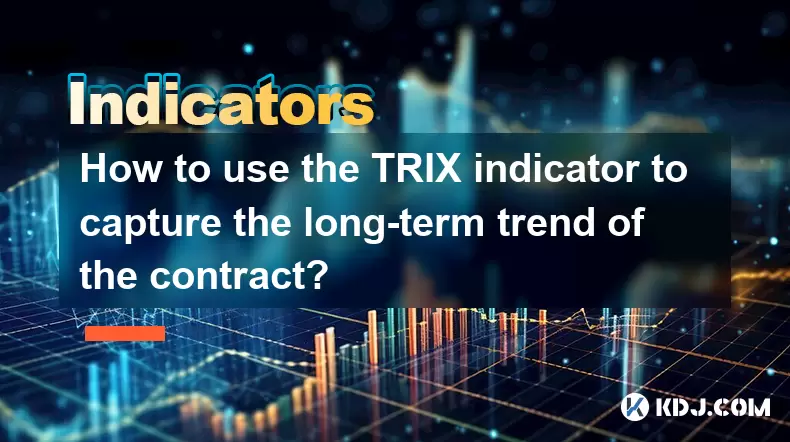
How to use the TRIX indicator to capture the long-term trend of the contract?
Jun 20,2025 at 09:14am
What Is the TRIX Indicator?The TRIX (Triple Exponential Average) indicator is a momentum oscillator used to identify oversold and overbought conditions, as well as potential trend reversals in financial markets. It is calculated by applying a triple exponential moving average to price data and then taking the percentage rate of change of that smoothed v...

How does the long lower shadow of the K line indicate the formation of the bottom of the contract?
Jun 19,2025 at 05:00am
Understanding the Long Lower Shadow in K-Line AnalysisIn cryptocurrency trading, K-line analysis plays a pivotal role in determining market sentiment and potential price reversals. A long lower shadow, also known as a long wick, is one of the most telling candlestick patterns that traders look for when assessing whether a bottom might be forming in a co...

What does it mean that the QACD indicator fast line crosses the slow line but does not increase in volume?
Jun 20,2025 at 12:22pm
Understanding the QACD Indicator and Its ComponentsThe QACD (Quantitative Accumulation Convergence Divergence) indicator is a technical analysis tool used by traders to identify potential trend reversals, momentum shifts, and entry or exit points in cryptocurrency markets. It consists of two primary lines: the fast line, which reacts more quickly to pri...

What does it mean that the BBI indicator crosses downward but the moving average does not cross?
Jun 20,2025 at 03:07pm
Understanding the Role of Blockchain in Cryptocurrency TransactionsBlockchain technology is the foundational infrastructure behind most cryptocurrencies. It serves as a decentralized, distributed ledger that records all transactions across a network of computers. This ensures transparency and eliminates the need for a central authority like a bank. Each...

What does it mean when the short-term RSI breaks through 50 but the long-term RSI does not move in the RSI indicator?
Jun 20,2025 at 10:42am
Understanding the RSI Indicator and Its Dual-Term ApplicationThe Relative Strength Index (RSI) is a widely used momentum oscillator in technical analysis, primarily for identifying overbought or oversold conditions in an asset’s price movement. It typically operates on a scale from 0 to 100, with levels above 70 considered overbought and below 30 consid...

How to combine the Bollinger Bands and MACD to improve the contract winning rate?
Jun 19,2025 at 06:35pm
Understanding Bollinger Bands and MACD IndicatorsTo effectively combine Bollinger Bands and the MACD (Moving Average Convergence Divergence), it's essential to first understand what each indicator represents. Bollinger Bands consist of a middle moving average line and two outer bands that adjust based on market volatility. When prices move toward the up...

How to use the TRIX indicator to capture the long-term trend of the contract?
Jun 20,2025 at 09:14am
What Is the TRIX Indicator?The TRIX (Triple Exponential Average) indicator is a momentum oscillator used to identify oversold and overbought conditions, as well as potential trend reversals in financial markets. It is calculated by applying a triple exponential moving average to price data and then taking the percentage rate of change of that smoothed v...

How does the long lower shadow of the K line indicate the formation of the bottom of the contract?
Jun 19,2025 at 05:00am
Understanding the Long Lower Shadow in K-Line AnalysisIn cryptocurrency trading, K-line analysis plays a pivotal role in determining market sentiment and potential price reversals. A long lower shadow, also known as a long wick, is one of the most telling candlestick patterns that traders look for when assessing whether a bottom might be forming in a co...
See all articles

























































































